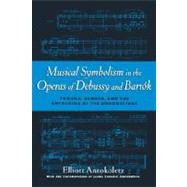
What is included with this book?
|
3 | (11) | |||
|
14 | (16) | |||
|
30 | (25) | |||
|
55 | (29) | |||
|
84 | (33) | |||
|
117 | (30) | |||
|
147 | (26) | |||
|
173 | (9) | |||
|
182 | (25) | |||
| 10. Duke Bluebeard's Castle: Toward Character Reversal: Reassignment of Pentatonic and Whole-Tone Spheres | 207 | (27) | |||
| 11. Duke Bluebeard's Castle: The Nietzschean Condition and Polarity of Characterizations: Diatonic-Chromatic Extremes | 234 | (14) | |||
| 12. Duke Bluebeard's Castle: Final Transformation and Retreat into Eternal Darkness: Synthesis of Pentatonic/Diatonic and Whole-Tone Spheres | 248 | (14) | |||
| 13. Symbolism and Expressionism in Other Early Twentieth-Century Operas | 262 | (29) | |||
| Epilogue | 291 | (4) | |||
| Notes | 295 | (36) | |||
| Works Cited | 331 | (10) | |||
| Index | 341 |
The New copy of this book will include any supplemental materials advertised. Please check the title of the book to determine if it should include any access cards, study guides, lab manuals, CDs, etc.
The Used, Rental and eBook copies of this book are not guaranteed to include any supplemental materials. Typically, only the book itself is included. This is true even if the title states it includes any access cards, study guides, lab manuals, CDs, etc.